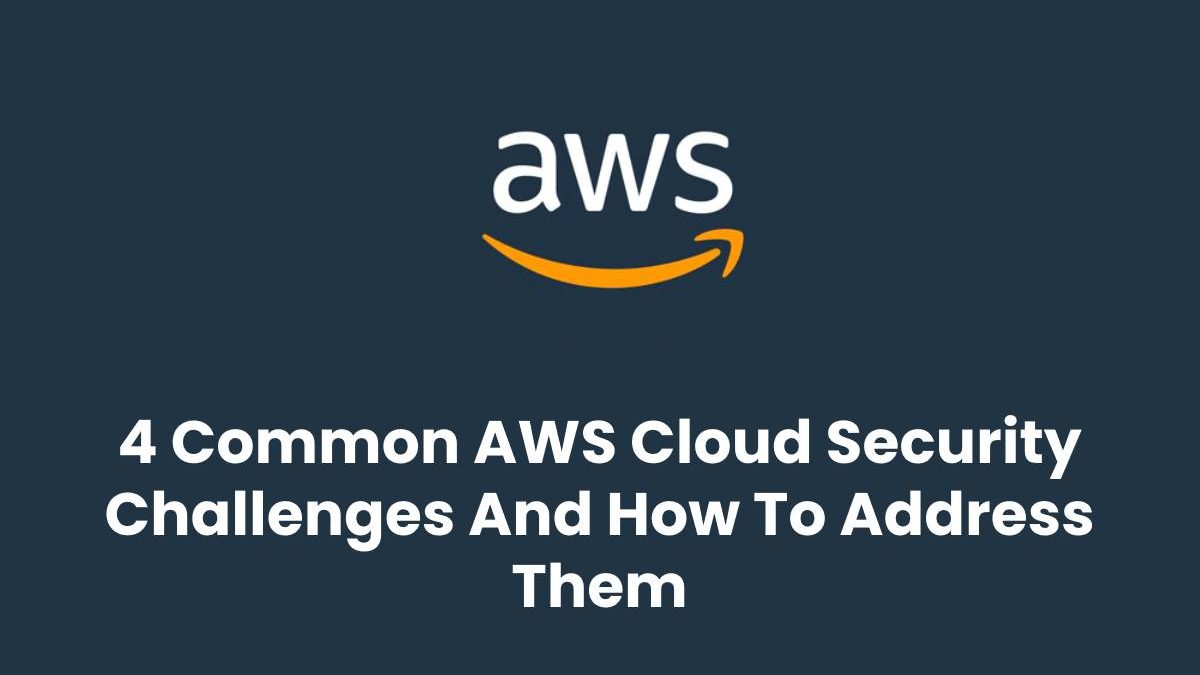4 Common AWS Cloud Security Challenges And How To Address Them
Experts agree that security is notably the most significant concern regarding the cloud. It’s one of the biggest considerations companies think of before cloud migration. Security is an issue that cloud-native companies also examine daily.
As such, it’s crucial to be updated with modern security standards. One step to take is to regularly assess your cloud architecture and ensure there are no hidden security vulnerabilities or issues. This also applies if your business data is on the Amazon Web Services (AWS) platform.
As the biggest provider of cloud services worldwide, AWS is a massive force that powers the large and complicated applications used by entertainment corporate giants, small entrepreneurs, social networks, and governments. Given the significant volume of user data they manage daily, it’s not surprising to assume they’re the target of various security threats.
And so, if you want to know some AWS cloud security challenges and how to deal with them, then continue reading below to learn more.
Table of Contents
Outmoded Software And Missed Security Patches

There’s various cloud security challenges customers face and one of those is having outdated software and missing security patches. This concern existed even before the cloud came—and it’s assumed true for on-site software, networks, and any digital solution. For such reasons, it should be expected to know that updating software and not missing security patches is one of the most basic cloud security risk management practices. However, it’s also one of the practices that are most undermined.
Regarding AWS, ignoring AWS updates is unwise as these updates are made as soon as possible security attacks are noticed. These usually come as public knowledge, and if you’re not updating your software, your company or business is vulnerable to malicious security attacks.
So, to address this, one step you can take is to update all that’s in the cloud. In addition, you must make sure that your information technology (IT) team is constantly updated with all authorized software version updates. For instance, the most up-to-date AWS security patches are continuously updated. The company releases the most current software vulnerabilities—so ensure your IT department monitors this regularly.
Likewise, if you use third-party organizations providing managed services, they can automate the patching process and make the whole ordeal less of a hassle for your company.
Additionally, you could hire an AWS security services provider to help you implement the latest AWS security measures at your company, as well as develop a comprehensive and agile cybersecurity strategy.
Lack Of Security Visibility
Know that there’s a significant number of cloud applications that companies currently use besides AWS. Likewise, as the logins and controls differ across each cloud application, it’s hard to determine at every moment which is accessing what and where across the organization (and even more primarily, if any of the activity is malicious). The lack of proper visibility becomes more notable if there’s no security strategy in place that supports the execution and management of these cloud applications.
And so, to achieve proper security visibility on AWS, you can apply these three practices:
Don’t Just Use Logs
Although logs are significant, they usually offer only a limited view of what’s truly happening. Usual network-based intrusion detection (NIDS) doesn’t provide much after a compromise because they have a limited view of determining the behavior that led to the security attack. As such, host-based intrusion detection (HIDS) becomes essential. With your company’s security embedded at the host level, you can know what, when, and where, before, during, and after a malicious activity occurs.
Secure Your Company From Insider Threat

If a security event happens, it’s vital to know who the actors are—and the sad truth is, at times, they can come from within. Some key factors that indicate that it came from an insider threat are when you notice unusual network activity, abnormal login attempts and failures, key file changes, or unauthorized installs.
Have An Inside-Out Perspective
You need more details than what an IDS log can offer if you have no idea what’s occurring on a host or workload. As such, an ideal solution is one that reveals particular events as time goes by on specific servers.
Password Issues
Breaches of third-party websites are another common AWS cloud security challenge. Here AWS credential becomes exposed to malevolent actors. Likewise, one survey showed that 70% of respondents admitted to using the same password. Regarding AWS, this can be bad if you’re using a credential from another website similar to your AWS account. This could lead to unideal exposure to your whole cloud infrastructure.
In addition to breaches, bad or easy-to-guess passwords are also a reason to worry. The Center for Internet Security (CIS) policy sections 1.4-1.10 advise password policy options that can help prevent password vulnerabilities by ensuring your password meets the proper complexity requirements. Requirements such as password length and combinations that include lowercase, uppercase letters, numbers, and symbols are considered in these sections. It also advises you to stop password reuse.
As a general rule, make it a routine to have good password security. Ensure you have different passwords on all sites and use a password manager. Train your staff on why having strong passwords and not reusing passwords on various websites is essential.
Unrestricted Access Permission
Many companies have a common problem of providing more permissions—usually because it’s less hard to configure and ensures all have access to what’s needed. This can also happen as one of AW’s cloud security issues, and this action can pose various risks to your company.
With unregulated access in one area, your employees can immediately gain access elsewhere, create changes they shouldn’t make, or even access processes and data elsewhere in the system.
Likewise, assigning and controlling many roles and permissions can be tricky if you have many individuals. This is often where many issues begin, as companies provide their staff with extensive permissions to save time. As such, one way to address this is to take note of using groups and predefined roles with special permissions for various users and teams. You must also set your general policy to ‘Default Deny’. And so, instead of forgetting to remove privileges from every staff member, it’s a matter of adding the individual permissions needed.
Wrapping Up
You can encounter various AWS cloud security challenges when using it. Some of those are using outdated software and missing security patches, lack of proper visibility, password issues, and unrestricted access permissions. The good news is that you can deal with these security issues, and this feature outlined some enforceable solutions. Overall, consider the information above for future reference.

